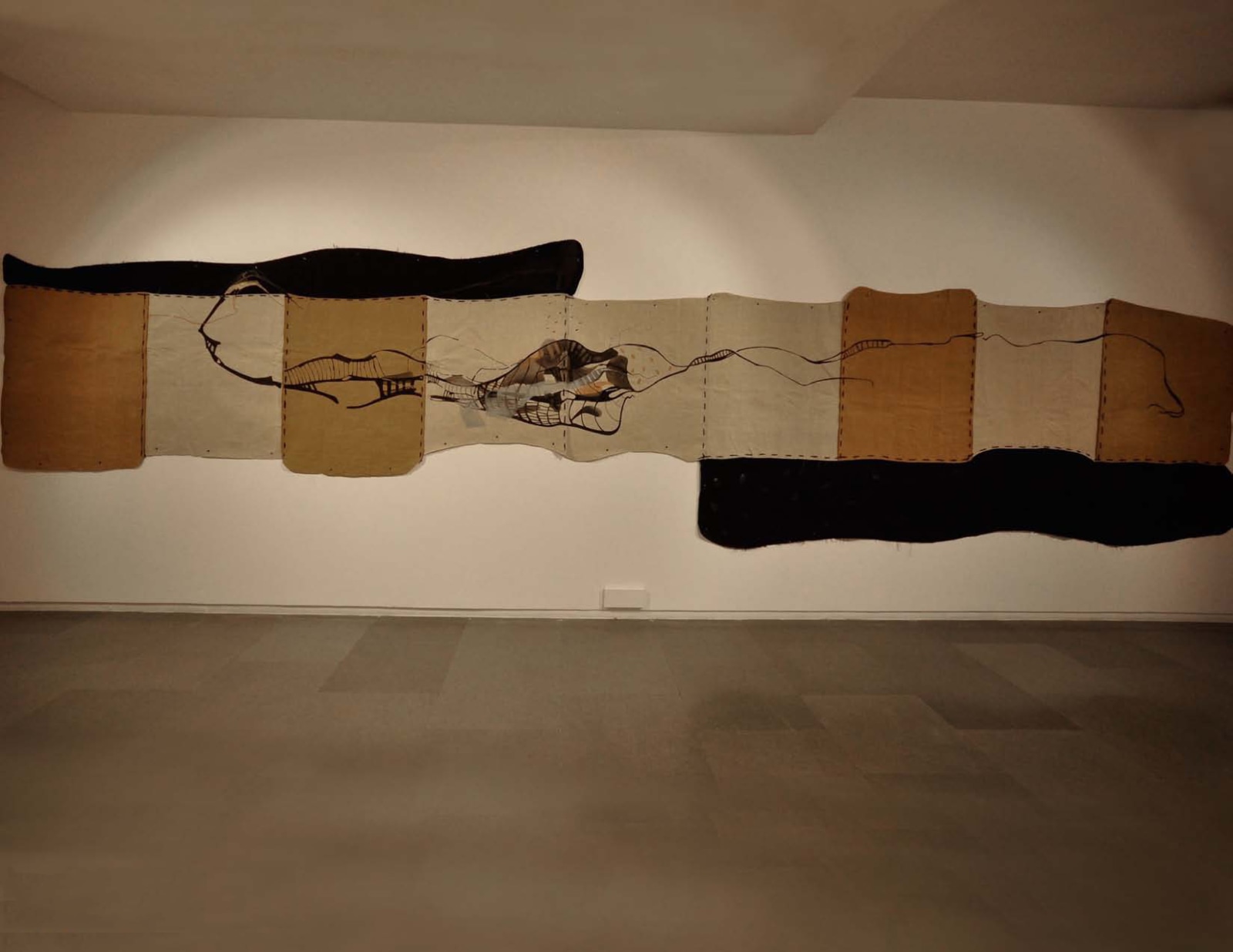
As far as I can stretch, 2000
Acrylic on tarpaulin & wooden thread
300″ x 72″
Beneath the surface
Makhijani mostly works in a painterly tradition—hectic brushstrokes and jagged lines fill her art with a nervous energy. She manages to convey an intrinsic edginess without relying too heavily on impasto—the layering of colours—or outré iconography.
Her oversized oils, usually done on paper, are full of zig-zag lines, crumbling shapes and chromatic explosions. At times, they appear almost cartographic—like secret maps or satellite images. But overwhelmingly, they bring to mind psychedelic visions, the dizzy labyrinths of Giovanni Battista Piranesi’s prisons of the imagination, where thoughts churn in an endless spiral.
Her titles, such as—Is it?;Stutter, Stutter; and Is it Or Is it Not Going Above Me!, among others—sound like private musings, whispered soliloquys that tease the viewer into wondering what these paintings could possibly mean. “It’s mostly what you make of it," says Makhijani. Truly, the questions and remarks are such that they could mean anything to anyone; often they trigger a memory before it quickly fades away. Transient and tender, Makhijani’s work is not conventionally beautiful, though it can ambush the viewer with its intricacies every once in a while.
Apart from the visual challenges of her work, there are complexities not apparent to the eye. “I have always preferred oil on paper," says Makhijani, “which means that my work may not last too long." She usually goes for Japanese washi paper, sized with rabbit-skin glue, which helps hold the paint together and also increases the durability of the work. In reality, her early works, even those going back 20 years, look strikingly vivid: They have aged gracefully indeed.
In the early 1990s, Makhijani spent a couple of years in Japan studying techniques that would go on to inflect her style. Using washi instead of ordinary paper is one of the legacies of Japan. She also uses sumi ink and allows it to run on wet paper: The effect is deceptively like printmaking. The cluster of leafy shapes, translucent and glowing with a gem-like clarity, called In Front of Me, grew out of an experiment with paper and colour. “My time in Japan, between 1991-93, pushed me back in terms of technique," says Makhijani. “I had to reinvent my style as I absorbed the lessons of science meeting art. I learnt to engage with surfaces from a fresh perspective."
This encounter with new surfaces infused a fresh dynamism into Makhijani’s practice. Apart from paper and concrete, she has made art on tarpaulin—in As Far As I Can Stretch, for instance, which she created during a Khoj residency.
Spending time in Kanazawa, Japan, with practically no knowledge of the local language, also left her alone with her thoughts for a considerable stretch of time. Without words, even the starkest reality is confronted in a haze of semi-comprehension. Makhijani’s paintings from these years grew out of shifting shapes, lush colours, violent edges—sometimes tamed by dry pastel, but never smoothed over.
This intrinsic angularity of her vision, its askew quality, also informs her sculptural work. “I started buying beads and empty watch dials from Chandni Chowk some years ago," says Makhijani. “I reassembled them into figures, twisted them into shapes." Empty watch dials signify erasure of time as well as timelessness, and the double association is evoked gently and subtly in the objects that Makhijani makes with them. The wheeled contraptions look like Lego toys that children would make; a few resemble giant ants or insects that might inhabit futuristic sci-fis; and some, oddly enough, bring to mind Alberto Giacometti’s stick people.
“I enjoy the play of light and shadow that a mesh of wires allows," says Makhijani. In her practice, lines, curves and creases do not just belong to the work but also spill over into the invisible field of art where meaning takes root and grows.
- Somak Ghoshal